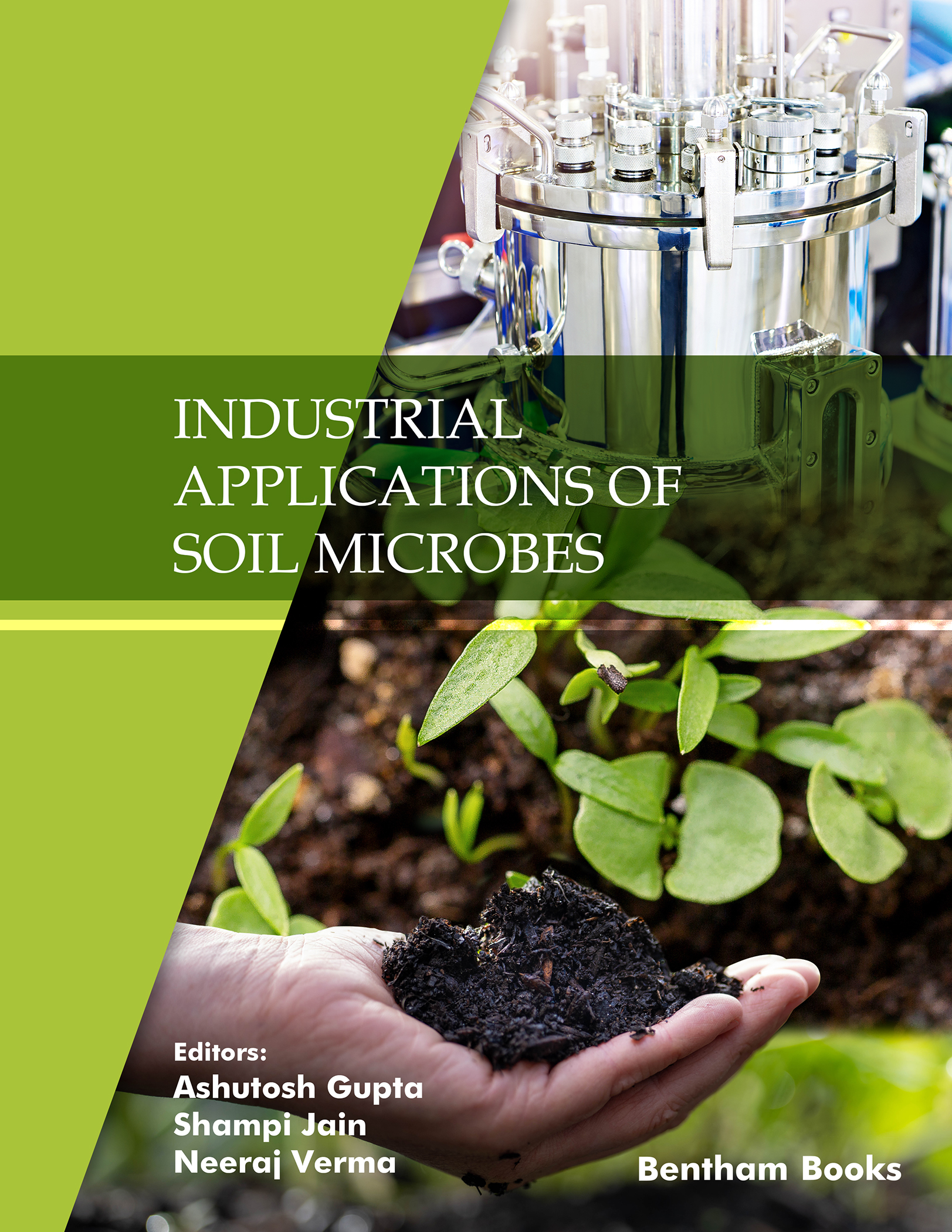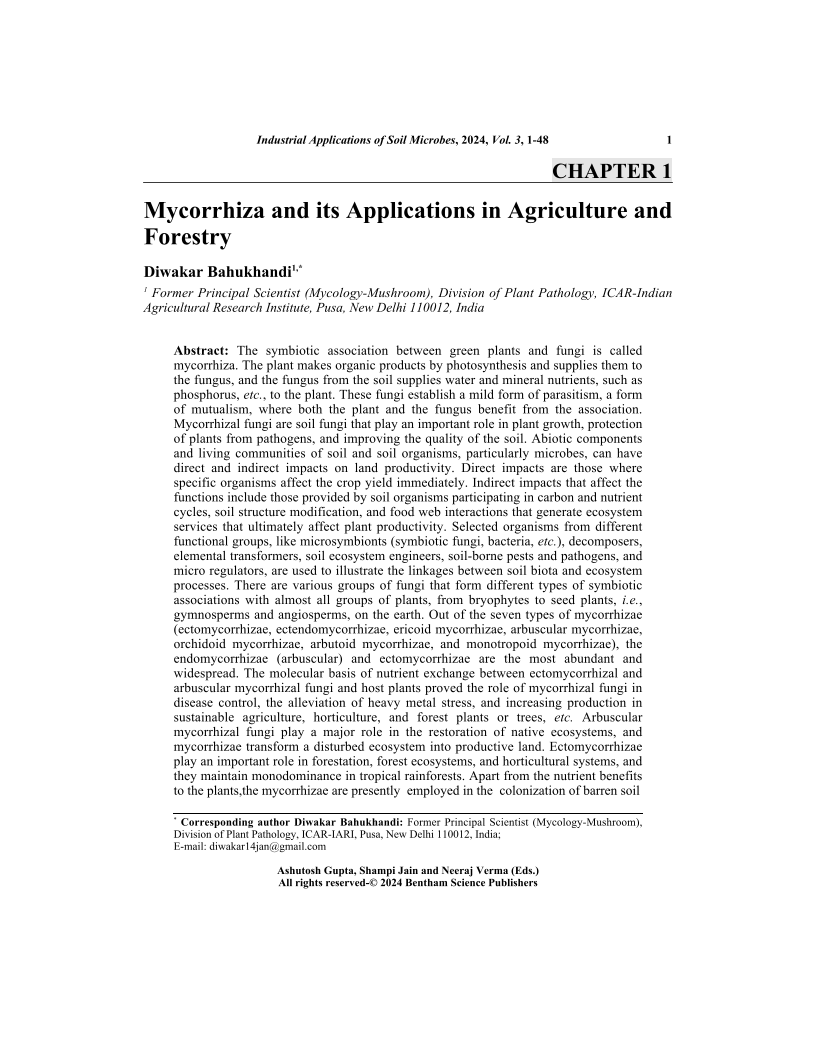Mycorrhiza and its Applications in Agriculture and Forestry

- By Diwakar Bahukhandi1
-
View Affiliations Hide AffiliationsAffiliations: 1 Former Principal Scientist (Mycology Mushroom), Division of Plant Pathology, ICAR-Indian Agricultural Research Institute, Pusa, New Delhi 110012, India
- Source: Industrial Applications of Soil Microbes , pp 1-48
- Publication Date: April 2024
- Language: English
Mycorrhiza and its Applications in Agriculture and Forestry, Page 1 of 1
< Previous page | Next page > /docserver/preview/fulltext/9789815079753/chapter-1-1.gif
The symbiotic association between green plants and fungi is called mycorrhiza. The plant makes organic products by photosynthesis and supplies them to the fungus, and the fungus from the soil supplies water and mineral nutrients, such as phosphorus, etc., to the plant. These fungi establish a mild form of parasitism, a form of mutualism, where both the plant and the fungus benefit from the association. Mycorrhizal fungi are soil fungi that play an important role in plant growth, protection of plants from pathogens, and improving the quality of the soil. Abiotic components and living communities of soil and soil organisms, particularly microbes, can have direct and indirect impacts on land productivity. Direct impacts are those where specific organisms affect the crop yield immediately. Indirect impacts that affect the functions include those provided by soil organisms participating in carbon and nutrient cycles, soil structure modification, and food web interactions that generate ecosystem services that ultimately affect plant productivity. Selected organisms from different functional groups, like microsymbionts (symbiotic fungi, bacteria, etc.), decomposers, elemental transformers, soil ecosystem engineers, soil-borne pests and pathogens, and micro regulators, are used to illustrate the linkages between soil biota and ecosystem processes. There are various groups of fungi that form different types of symbiotic associations with almost all groups of plants, from bryophytes to seed plants, i.e., gymnosperms and angiosperms, on the earth. Out of the seven types of mycorrhizae (ectomycorrhizae, ectendomycorrhizae, ericoid mycorrhizae, arbuscular mycorrhizae, orchidoid mycorrhizae, arbutoid mycorrhizae, and monotropoid mycorrhizae), the endomycorrhizae (arbuscular) and ectomycorrhizae are the most abundant and widespread. The molecular basis of nutrient exchange between ectomycorrhizal and arbuscular mycorrhizal fungi and host plants proved the role of mycorrhizal fungi in disease control, the alleviation of heavy metal stress, and increasing production in sustainable agriculture, horticulture, and forest plants or trees, etc. Arbuscular mycorrhizal fungi play a major role in the restoration of native ecosystems, and mycorrhizae transform a disturbed ecosystem into productive land. Ectomycorrhizae play an important role in forestation, forest ecosystems, and horticultural systems, and they maintain monodominance in tropical rainforests. Apart from the nutrient benefits to the plants,the mycorrhizae are presently employed in the colonization of barren soil and improving the transplantability of forest plants. Mycorrhizae create resistance against insect pests, various root diseases, toxicity, and reduced susceptibility in plants. The presence of mycorrhizae also favours the growth of beneficial microbiota, converting the rhizosphere into a mycorrhizosphere and increasing tolerance to adverse conditions like drought, salinity, and stress in the plants.
-
From This Site
/content/books/9789815079753.chapter-1dcterms_subject,pub_keyword-contentType:Journal105

